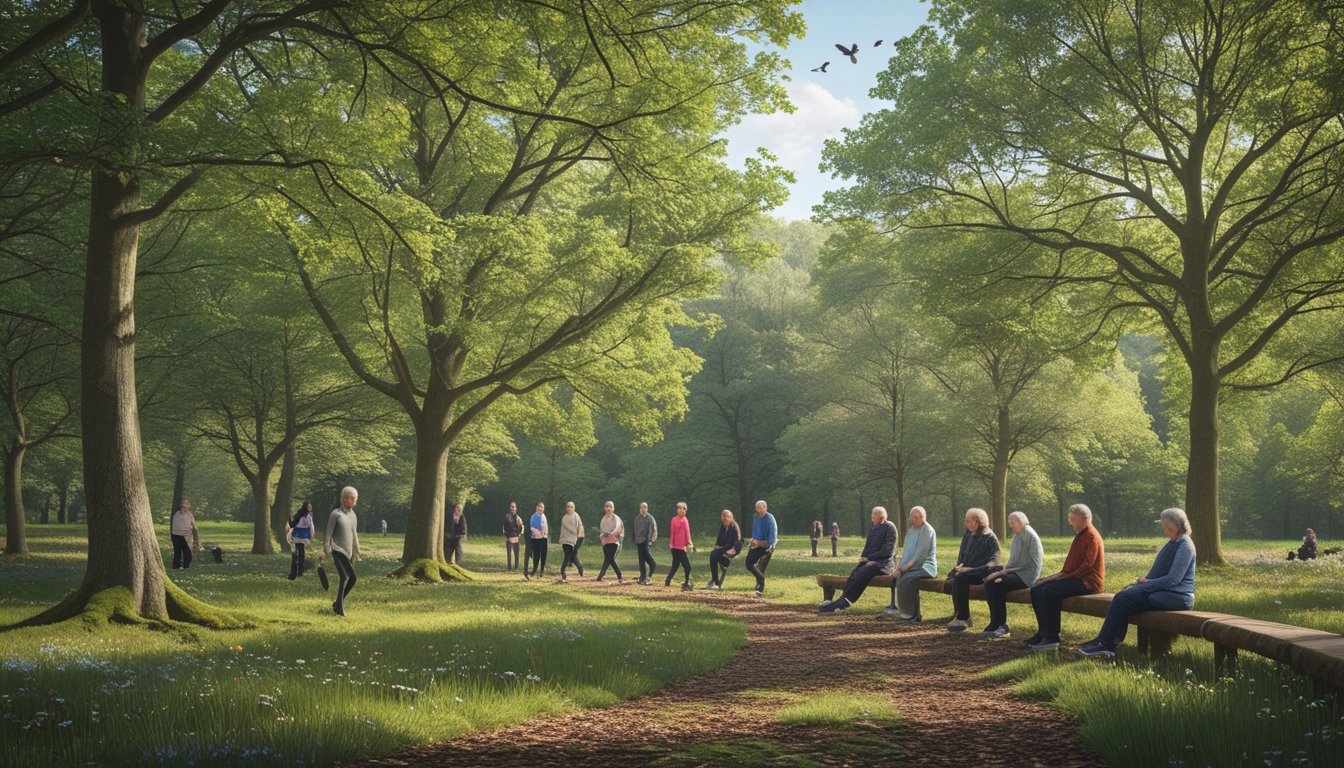Late updated: 11 Aug 2025 12:08
Written by: Emily Thornton
Exploring The Benefits Of Native UK Trees For Health And Wellbeing
The natural world surrounding us is more than just a scenic backdrop. Native UK trees provide significant health benefits, from enhancing our mental wellbeing to supporting our physical health. These trees, deeply rooted in our local landscapes, offer a plethora of advantages that extend far beyond their aesthetic appeal.

Our connection with native trees supports both biodiversity and ecosystems, helping us thrive alongside nature. They are not only allies in environmental conservation but also in promoting healing and calmness. This intricate relationship between the natural world and human health offers deeper insights into why preserving and planting native trees is increasingly vital.
As we explore these benefits, we might find ourselves walking through our local park with a renewed sense of appreciation for the trees we often take for granted. Their presence is crucial not just for the environment but also for the nurture of our communities and ourselves.
Key Takeaways
- Native UK trees boost mental and physical health.
- They enrich biodiversity and ecosystems.
- Trees are essential for both nature and community well-being.
Key Health and Wellbeing Benefits of Native UK Trees

Native UK trees provide an array of health and wellbeing benefits that are integral to our communities and ecosystems. From improving mental health to enhancing air quality, these trees play a crucial role in our environment and personal lives.
Physical and Mental Health Advantages
Interacting with native UK trees and woodlands has proven to enhance both physical and mental health. Spending time in woodland areas reduces stress levels and promotes mental clarity. The quiet and natural surroundings offer a respite from the noise of urban areas, leading to improved mood and a sense of wellbeing.
In terms of physical health, regular exposure to green spaces encourages physical activity. Whether it's walking, hiking, or even just sitting among the trees, these activities contribute to cardiovascular health. The Woodland Trust has compiled research showing significant positive impacts of trees on mental and physical conditions. By connecting with our natural heritage, we foster both emotional resilience and physical vitality.
Air Quality Improvement and Pollution Reduction
Native trees are vital for improving air quality. Through the process of photosynthesis, trees remove carbon dioxide and release oxygen. They act as natural air filters by capturing particulates like dust and pollutants on their leaves and bark. This contributes to cleaner, healthier air in our communities.
Species such as the English oak are particularly effective at absorbing airborne pollutants. This function is crucial in urban areas where air pollution is a significant concern. Native trees not only reduce carbon emissions; they also mitigate the heat island effect, making cities more liveable.
Flood Prevention and Soil Stability
Native trees play an essential role in flood prevention and maintaining soil stability. Their roots hold the soil together, reducing erosion and preventing landslides. During heavy rains, tree canopies intercept rainfall, reducing the speed at which water hits the ground and decreasing surface runoff.
These trees help absorb excess water and release it gradually, lowering the risk of flooding. This natural flood management technique is a sustainable alternative to man-made solutions. By preserving and promoting native woodlands, we enhance the resilience of our landscapes against extreme weather events.
Therapeutic Use of Woodlands
The therapeutic use of woodlands is increasingly recognised as beneficial for mental health. Forest bathing, or "Shinrin-yoku," a practice originating in Japan, involves immersing oneself in a woodland environment to relieve stress and promote relaxation. The sights, sounds, and smells of the forest environment are known for their calming effects.
Therapy and guided walks in these settings can enhance overall mental health. Woodlands offer a space for reflection and mindfulness, helping reduce symptoms of anxiety and depression. By making natural spaces accessible and integrating them into therapeutic practices, we improve wellbeing and strengthen our connection to the environment.
The Role of Native Trees in Biodiversity, Ecosystems, and Natural Remedies
Native UK trees contribute significantly to biodiversity, ecosystems, and natural health remedies. These trees support wildlife, provide medicinal properties, and integrate into practices like agroforestry, enhancing our natural landscape.
Supporting Biodiversity and Pollinators
Native trees serve as vital habitats for various species. They support local biodiversity by offering food sources and shelter. For example, oak trees host hundreds of insect species, which are crucial food supply for birds.
Pollinators, including bees and butterflies, rely on native trees like hawthorn and rowan, which provide nectar and pollen. By ensuring these trees thrive, we support our local biodiversity and maintain ecological balance.
Medicinal Qualities of Native Tree Species
Many native trees possess medicinal properties. Willow, for instance, contains salicin, used historically to treat pain and inflammation. Yarrow, another native plant, is known for its ability to aid wound healing.
These plants enrich herbal medicine practices, allowing us to draw on natural, sustainable resources. Knowledge of such native remedies contributes to holistic health practices, rooted in natural traditions.
Hedgerows, Shrubs, and Agroforestry for Health
Hedgerows and shrubs play a crucial role in agroforestry, promoting biodiversity and providing windbreaks and erosion control. They can be implemented sustainably in agriculture to enhance productivity while supporting wildlife corridors.
Agroforestry strategies allow us to utilise these native plants effectively, combining food production with ecological stewardship. Hedgerows also serve as habitats for small mammals and nesting birds, bolstering local biodiversity.
Sustainable Conservation and Nature Recovery
By planting native trees and maintaining existing woodlands, we aid nature recovery and sustainable conservation. Coppicing, a traditional practice involving periodic cutting of trees, encourages new growth while maintaining ecosystems' health.
Rewilding initiatives that include native species are essential for restoring natural habitats. As we embrace these conservation practices, we foster a healthier environment, encouraging the return of diverse species and bolstering habitat resilience.
Frequently Asked Questions

Exploring the health benefits of native UK trees reveals their impact on physical health, children’s development, mental well-being, and environmental support. These trees also play a crucial role in maintaining local biodiversity.
What are the most significant health benefits associated with UK native trees?
Native UK trees enhance air quality by absorbing pollutants and producing oxygen. Their presence can reduce stress levels and improve overall physical health through better air quality and a naturally calming environment.
How do trees contribute to environmental well-being?
Trees act as natural air filters and help prevent soil erosion. They play a vital role in regulating temperature and providing habitats for diverse wildlife, thereby supporting a balanced ecosystem.
In what ways are trees vital for children's development and well-being?
Time spent around trees can enhance children’s cognitive development, encouraging creativity and problem-solving skills. Access to green spaces has been linked to reduced symptoms of ADHD and improved social interactions.
Can you outline the mental health advantages of being around trees?
Interacting with nature and spending time in wooded areas can lead to reduced anxiety and stress. Being among trees has a soothing effect, promoting mental clarity and emotional stability.
What are the core reasons for planting trees from a health perspective?
Planting trees can improve community health by reducing pollution and providing opportunities for physical activities. They offer spaces for relaxation and connection with nature, essential for maintaining mental health.
How do native trees specifically support the ecosystem and local biodiversity?
Native trees are crucial for sustaining local wildlife, providing food and shelter. They support the intricate food webs within their ecosystems and enhance the resilience of natural habitats against environmental changes.
